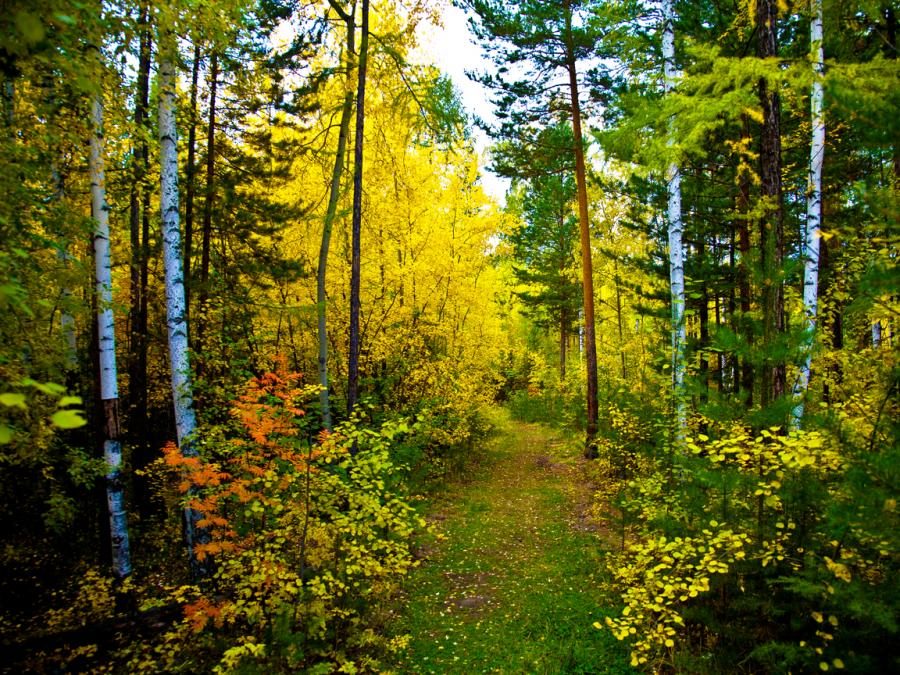The Man Who Planted Trees
Wikipedia
The Man Who Planted Trees, also known as The Story of Elzéard Bouffier, The Most Extraordinary Character I Ever Met, and The Man Who Planted Hope and Reaped Happiness, is an allegorical tale by French author Jean Giono, published in 1953.
It tells the story of one shepherd’s long and successful singlehanded effort to re-forest a desolate valley in the foothills of the Alps in Provence throughout the first half of the 20th century. The tale is quite short — only about 4000 words long. It was composed in French, but first published in English.
The story itself is so touching that many readers have believed that Elzéard Bouffier was a genuine historical figure and that the narrator of the story was a young Jean Giono himself, and that the tale is part autobiographical. Certainly, Giono lived during this time. While he was alive, Giono enjoyed allowing people to believe that the story was real, and considered it as a tribute to his skill. His daughter, Aline Giono, described it as “a family story for a long time”. However, Giono himself explained in a 1957 letter to an official of the city of Digne:
“Sorry to disappoint you, but Elzéard Bouffier is a fictional person. The goal was to make trees likeable, or more specifically, make planting trees likeable.”
In the letter, he describes how the book was translated in a multitude of languages, distributed freely, and therefore was a success. He adds that, although “it does not bring me a cent”, it is one of the texts of which he is most proud.
Real-life people in other countries have produced similar effects. Abdul Karim in India created a forest out of nothing over a period of 19 years, using the same method as Bouffier. Another man, Jadav “Molai” Payeng, planted a forest sprawling 1,360 acres, calling it the Molai Woods, in Assam, India (see below for more information about Payeng). An organization called Trees for the Future has assisted more than 170,000 families, in 6,800 villages of Asia, Africa, and the Americas, to plant over 35 million trees. Wangari Maathai, 2004 Nobel Peace Prize recipient, founded the Green Belt Movement which planted over 47 million trees to restore the Kenyan environment. Shanghai Roots & Shoots, a division of the Jane Goodall Institute launched The Million Tree Project in Kulun Qi, Inner Mongolia to plant one million trees to stop desertification and alleviate global warming.
The character of Bouffier has some similarity to the legendary early 19th century American tree planter Johnny Appleseed. Another tireless promoter of tree-planting is Marthinus Daneel, Ph.D., Professor of African studies at Boston University and founder of ZIRRCON (Zimbabwean Institute of Religious Research and Ecological Conservation). Daneel has worked with churches for years planting millions of trees in Zimbabwe. Due to instability in Zimbabwe in recent years, such efforts have been significantly curtailed. Similarly, concerned about global warming, Bhausaheb Thorat planted 45 million seeds after being inspired by the book. For this he started the Dandakaranya Abhiyaan in June 2006 at Sangamner, Maharashtra, India (Sangamner is on Pune-Nasik highway). UNEP has taken notice of this campaign in its A Billion Tree Campaign in which almost 45 million seedlings have been planted.
………………….
Related Links:
• Near-Death Experience Inspires Man To Help Save The Planet By Planting Trees
• YouTubers Band Together To Plant 20 Million Trees To Fight Climate Change
• Team Trees
• Wikipedia on ‘The Man Who Planted Trees’
• The Man Who Planted Trees (book)
• Plant A Billion Trees
• Trees for the Future Website
• Trees for the Future on Facebook
• The Green Belt Movement
• The Shanghai Roots & Shoots Million Tree Project
• Johnny Appleseed
• Green World Campaign
………………….
………………….
The Man Who Planted Hope
By Jean Giono
For a human character to reveal truly exceptional qualities, one must have the good fortune to be able to observe its performance over many years. If this performance is devoid of all egoism, if its guiding motive is unparalleled generosity, if it is absolutely certain that there is no thought of recompense and that, in addition, it has left its visible mark upon the earth, then there can be no mistake.
About 40 years ago I was taking a long trip on foot over mountain heights quite unknown to tourists in that ancient region where the Alps thrust down into Provence. All this, at the time I embarked upon my long walk through these deserted regions, was barren and colourless land. Nothing grew there but wild lavender.
I was crossing the area at its widest point, and after three days’ walking found myself in the midst of unparalleled desolation. I camped near the vestiges of an abandoned village. I had run out of water the day before, and had to find some. These clustered houses, although in ruins like an old wasps’ nest, suggested that there must once have been a spring or well here. There was, indeed, a spring, but it was dry. The five or six houses, roofless, gnawed by wind and rain, the tiny chapel with its crumbling steeple, stood about like the houses and chapels in living villages, but all life had vanished.
It was a fine June day, brilliant with sunlight, but over this unsheltered land, high in the sky, the wind blew with unendurable ferocity. It growled over the carcasses of the houses like a lion disturbed at its meal. I had to move my camp.
After five hours’ walking I had still not found water, and there was nothing to give me any hope of finding any. All about me was the same dryness, the same coarse grasses. I thought I glimpsed in the distance a small black silhouette, upright, and took it for the trunk of a solitary tree. In any case, I started toward it. It was a shepherd. Thirty sheep were lying about him on the baking earth.
He gave me a drink from his watergourd and, a little later, took me to his cottage in a fold of the plain. He drew his water — excellent water — from a very deep natural well above which he had constructed a primitive winch.
The man spoke little. This is the way of those who live alone, but one felt that he was sure of himself, and confident in his assurance. That was unexpected in this barren country. He lived not in a cabin but in a real house built of stone that bore plain evidence of how his own efforts had reclaimed the ruin he had found there on his arrival. His roof was strong and sound. The wind on its tiles made the sound of the sea upon its shores.
The place was in order, the dishes washed, the floor swept, his rifle oiled; his soup was boiling over the fire. I noticed then that he was cleanly shaved, that all his buttons were firmly sewn on, that his clothing had been mended with the meticulous care that makes mending invisible. He shared his soup with me and afterwards, when I offered my tobacco pouch, he told me that he did not smoke. His dog, as silent as himself, was friendly without being servile.
It was understood from the first that I should spend the night there; the nearest village was still more than a day and a half away. And besides I was perfectly familiar with the nature of the rare villages in that region. There were four or five of them scattered well apart from each other on these mountain slopes, among white oak thickets, at the extreme end of the wagon roads. They were inhabited by charcoal-burners, and the living was bad. Families crowded together in a climate that is excessively harsh both in winter and summer, found no escape from the unceasing conflict of personalities. Irrational ambition reached inordinate proportions in the continual desire for escape. The men took their wagonloads of charcoal to the town, then returned. The soundest characters broke under the perpetual grind. The women nursed their grievances. There was rivalry in everything — over the price of charcoal as over a pew in church. And over all there was the wind, also ceaseless, to rasp upon the nerves. There were epidemics of suicide and frequent cases of insanity, usually homicidal.
The shepherd went to fetch a small sack and poured out a heap of acorns on the table. He began to inspect them, one by one, with great concentration, separating the good from the bad. I smoked my pipe. I did not offer to help him. He told me that it was his job. And in fact, seeing the care that he devoted to the task, I did not insist. That was the whole of our conversation. When he had set aside a large enough pile of good acorns, he counted them out by tens, meanwhile eliminating the small ones, or those which were slightly cracked, for now he examined them more closely. When he had thus selected 100 perfect acorns, he stopped and went to bed.
There was a peace in being with this man. The next day I asked if I might rest here for a day. He found it quite natural — or to be more exact, he gave me the impression that nothing could startle him. The rest was not absolutely necessary, but I was interested and wished to know more about him. He opened the pen and led his flocks to pasture. Before leaving, he plunged his sack of carefully selected and counted acorns into a pail of water.
I noticed that he carried for a stick an iron rod as thick as my thumb and about a yard and a half long. Resting myself by walking, I followed a path parallel to his. His pasture was in a valley. He left the little flock in charge of the dog and climbed toward where I stood. I was afraid that he was about to rebuke me for my indiscretion, but it was not that at all; this was the way he was going, and he invited me to go along if I had nothing better to do. He climbed to the top of the ridge about a hundred yards away.
There he began thrusting his iron rod into the earth, making a hole in which he planted an acorn; then he refilled the hole. He was planting an oak tree. I asked him if the land belonged to him. He answered no. Did he know whose property it was? He did not. He supposed it was community property, or perhaps belonged to people who cared nothing about it. He was not interested in finding out whose it was. He planted his hundred acorns with the greatest care. After the midday meal he resumed his planting. I suppose I must have been fairly insistent in my questioning, for he answered me. For three years he had been planting trees in this wilderness. He had planted 100,000. Of these, 20,000 had sprouted. Of the 20,000, he still expected to lose about half to rodents or to the unpredictable designs of Providence. There remained 10,000 oak trees to grow where nothing had grown before.
That was when I began to wonder about the age of this man. He was obviously over 50. Fifty-five, he told me. His name was Elzeard Bouffier. He had once had a farm in the lowlands. There he had had his life. He had lost his only son, then his wife. He had withdrawn into this solitude, where his pleasure was to live leisurely with his lambs and his dog. It was his opinion that this land was dying for want of trees. He added that, having no very pressing business of his own, he had resolved to remedy this state of affairs.
Since I was at that time, in spite of my youth, leading a solitary life, I understood how to deal gently with solitary spirits. But my youth forced me to consider the future in relation to myself and to a certain quest for happiness. I told him that in 30 years his 10,000 oaks would be magnificent. He answered quite simply that if God granted him life in 30 years he would have planted so many more that these 10,000 would be like a drop in the ocean.
Besides he was now studying the reproduction of beech trees and had a nursery of seedlings grown from beechnuts near his cottage. The seedlings, which he protected from his sheep with a wire fence, were very beautiful. He was also considering birches for the valleys, where, he told me, there was a certain amount of moisture a few yards below the surface of the soil.
The next day we parted.
The following year came the War of 1914, in which I was involved for the next five years. An infantryman hardly had the time for reflecting upon trees. To tell the truth, the thing had made no impression upon me; I had considered it as a hobby, a stamp collection, and forgotten it.
The war over, I found myself possessed of a tiny demobilization bonus and a huge desire to breathe fresh air for a while. It was with no other objective that I again took the road to the barren lands.
The countryside had not changed. However, beyond the deserted village I glimpsed in the distance a sort of greyish mist that covered the mountaintops like carpet. Since the day before, I had begun to think again of the shepherd tree-planter. “Ten thousand oaks,” I reflected, “really take up quite a bit of space.” I had seen too many men die during those five years not to imagine easily that Elzeard Bouffier was dead, especially since, at 20, one regards men of 50 as old men with nothing left to do but die. He was not dead.
As a matter of fact he was extremely spry. He had changed jobs. Now he had only four sheep but, instead, a hundred beehives. He had got rid of the sheep because they threatened his young trees. For, he told me (and I saw for myself), the war had disturbed him not at all. He had imperturbably continued to plant.
The oaks of 1910 were then 10 years old and taller than either of us. It was an impressive spectacle. I was literally speechless and, as he did not talk, we spent the whole day walking in silence through his forest. In three sections, it measured 11 kilometres in length and three kilometres at its greatest width. When you remembered that all this had sprung from the hands and the soul of this one man without technical resources, you understood that men could be as effectual as God in realms other than that of destruction.
He has pursued his plan, and beech trees as high as my shoulder, spreading out as far as the eye could reach, confirmed it. He showed me handsome clumps of birch, planted five years before–that is, in 1915, when I had been fighting at Verdun. He had set them out in the valleys where he had guessed–and rightly–that there was moisture almost at the surface of the ground. They were as delicate as young girls, and very well established.
Creation seemed to come about in a sort of chain reaction. He did not worry about it; he was determinedly pursuing his task in all its simplicity. But as we went back toward the village, I saw water flowing in brooks that had been dry since the memory of man. This was the most impressive result of chain reaction that I had seen. These dry streams had once, long ago, run with water. Some of the dreary villages I mentioned before had been built on sites of Roman settlements, traces of which still remained. Archaeologists, exploring there, had found fishhooks where, in the 20th century, cisterns were needed to assure a small supply of water.
The wind, too, scattered seeds. As the water reappeared, so there reappeared willows, rushes, meadows, gardens, flowers, and a certain purpose in being alive. But the transformation took place so gradually that it became part of the pattern without causing any astonishment. Hunters, climbing into the wilderness in pursuit of hares or wild boar, had of course noticed the sudden growth of little trees, but had attributed it to some caprice of the earth. That is why no one meddled with Elzeard Bouffier’s work. If he had been detected he would have had opposition. He was undetectable. Who in the administration could have dreamed of such perseverance in a magnificent generosity?
To have anything like a precise idea of this exceptional character one must not forget that he worked in total solitude: so total that, toward the end of his life, he lost the habit of speech. Or perhaps it was that he saw no need for it.
In 1933, he received a visit from a forest ranger who notified him of an order against lighting fires out of doors for fear of endangering the growth of this natural forest. It was the first time, the man told him naively, that he had ever heard of a forest growing of its own accord. At that time Bouffier was about to plant beeches at a spot some 12 kilometres from his cottage. In order to avoid traveling back and forth — for he was then 75 — he planned to build a stone cabin right at the plantation. The next year he did so.
In 1935, w hole delegation came from the Government to examine the “natural forest.” There was a high official from the Forest Service, a Deputy, technicians. There was a great deal of ineffectual talk. It was decided that something must be done except the only helpful thing: the whole forest was placed under the protection of the State, and charcoal burning prohibited. For it was impossible not to be captivated by the beauty of those young trees in the fullness of health, and they cast their spell over the Deputy himself.
A friend of mine was among the forestry officers of the delegation. To him I explained the mystery. One day the following week we went together to see Elzeard Bouffier. We found him hard at work some 10 kilometres from the spot where the inspection had taken place.
This forester was not my friend for nothing. He was aware of values. He knew how to keep silent. I delivered the eggs I had brought as a present. We shared our lunch among the three of us and spent several hours in wordless contemplation of the countryside.
In the direction from which we had come, the slopes were covered with trees 20 to 25 feet tall. I remembered how the land had looked in 1913: a desert . . .Peaceful, regular toil, the vigorous mountain air, frugality and, above all, serenity in the spirit had endowed this old man with awe-inspiring health. He was one of God’s athletes. I wondered how many more acres he was going to cover with trees.
Before leaving, my friend made a brief suggestion about certain species of trees that the soil here seemed particularly suited for. He did not force the point, “for the very good reason,” he told me later, “that Bouffier knows more about it than I do.” At the end of an hour’s walking — having turned it over in his mind — he added, “He knows a lot more about it than anybody. He’s discovered a wonderful way to be happy!”
It was thanks to this officer that not only the forest but also the happiness of the man was protected. He delegated three rangers to the task, and so terrorized them that they remained proof against all the bottles of wine the charcoal-burners could offer.
The only serious danger to the work occurred during the War of 1939. As cars were being run on gazogenes (wood-burning generators), there was never enough wood. Cutting was started among the oaks of 1910, but the area was so far from any railway that the enterprise turned out to be financially unsound. It was abandoned. The shepherd had seen nothing of it. He was 30 kilometres away, peacefully continuing his work, ignoring the War of 1939 as he had ignored that of 1914.
I saw Elzeard Bouffier for the last time in June of 1945. He was then 87. I had started back along the route through the wastelands, but now, in spite of the disorder in which the war had left the country, there was a bus running between the Durance Valley and the mountain. I attributed the fact that I no longer recognized the scenes of my earlier journeys to this relatively speedy transportation. It took the name of a village to convince me that I was actually in that region that had been all ruins and desolation.
The bus put me down at Vergons. In 1913 this hamlet of 10 or 12 houses had three inhabitants. They had been savage creatures, hating one another, living by trapping game, little removed, physically and morally, from the conditions of prehistoric man. All about them nettles were feeding upon the remains of abandoned houses. Their condition had been beyond hope. For them, nothing but to await death — a situation which rarely predisposes to virtue.
Everything was changed. Even the air. Instead of the harsh, dry winds that used to attack me, a gentle breeze was blowing, laden with scents. A sound like water came from the mountains; it was the wind in the forest. Most amazing of all, I heard the actual sound of water falling into a pool. I saw that a fountain had been built, that it flowed freely and — what ged me most — that someone had planted a linden beside it, a linden that must have been four years old, already in full leaf, the incontestable symbol of resurrection.
Besides, Vergons bore evidence of labour at the sort of undertaking for which hope is required. Hope, then, had returned. Ruins had been cleared away, dilapidated walls torn down and five houses restored. Now there were 28 inhabitants, four of them young married couples. The new houses, freshly plastered, were surrounded by gardens where vegetables and flowers grew in orderly confusion, cabbages and roses, leeks and snapdragons, celery and anemones. It was now a village where one would like to live.
From that point I went on foot. The war just finished had not allowed the full blooming of life, but Lazarus was out of the tomb. On the lower slopes of the mountain I saw little fields of barley and rye; deep in that narrow valley the meadows were turning green.
It had taken only the eight years since then for the whole countryside to glow with health and prosperity. On the site of the ruins I had seen in 1913 now stand neat farms, cleanly plastered, testifying to a happy and comfortable life. The old streams fed by the rains and snows that the forest conserves, are flowing again. Their waters have been channeled. On each farm, in groves of maples, fountain pools overflow onto carpets of fresh mint. Little by little the villages have been rebuilt. People from the plains, where land is costly, have settled here, bringing youth, motion, the spirit of adventure. Along the roads you meet the hearty men and women, boys and girls who understand laughter and have recovered a taste for picnics. Counting the former population, unrecognizable now that they live in comfort, more than 10,000 people owe their happiness to Elzeard Bouffier.
When I reflect that one man armed only with his own physical and moral resources, was able to cause this land of Canaan to spring from the wasteland, I am convinced that, in spite of everything, humanity is admirable. But when I compute the unfailing greatness of spirit and the tenacity of benevolence that it must have taken to achieve this result, I am taken with an immense respect for that old and unlearned peasant who was able to complete a work worthy of God.
Elzeard Bouffier died peacefully in 1947 at the hospice in Banon.
………………….
The Man Who Made A Forest
By Manimugdha S. Sharma
The Times of India
April 1, 2012
Way back in 1953, French author Jean Giono wrote the epic tale The Man Who Planted Trees. It seemed so real that readers thought the central character, Elzeard Bouffier , was a living individual until the author clarified he had created the person only to make his readers fall in love with trees. Assam’s Jadav Payeng has never heard of Giono’s book. But he could be Bouffier. He has single-handedly grown a sprawling forest on a 550-hectare sandbar in the middle of the Brahmaputra. It now has many endangered animals, including at least five tigers, one of which bore two cubs recently.
The place lies in Jorhat, some 350 km from Guwahati by road, and it wasn’t easy for Sunday Times to access him. At one point on the stretch, a smaller road has to be taken for some 30 km to reach the riverbank. There, if one is lucky, boatmen will ferry you across to the north bank. A trek of another 7 km will then land you near Payeng’s door. Locals call the place ‘Molai Kathoni’ (Molai’s woods) after Payeng’s pet name, Molai.
It all started way back in 1979 when floods washed a large number of snakes ashore on the sandbar. One day, after the waters had receded, Payeng , only 16 then, found the place dotted with the dead reptiles. That was the turning point of his life.
“The snakes died in the heat, without any tree cover. I sat down and wept over their lifeless forms. It was carnage . I alerted the forest department and asked them if they could grow trees there. They said nothing would grow there. Instead, they asked me to try growing bamboo. It was painful, but I did it. There was nobody to help me. Nobody was interested,” says Payeng, now 47.
Leaving his education and home, he started living on the sandbar. Unlike Robinson Crusoe, Payeng willingly accepted a life of isolation. And no, he had no Man Friday. He watered the plants morning and evening and pruned them. After a few years, the sandbar was transformed into a bamboo thicket. “I then decided to grow proper trees. I collected and planted them. I also transported red ants from my village, and was stung many times. Red ants change the soil’s properties . That was an experience,” Payeng says, laughing.
Soon, there were a variety of flora and fauna which burst in the sandbar, including endangered animals like the one-horned rhino and Royal Bengal tiger. “After 12 years, we’ve seen vultures. Migratory birds, too, have started flocking here. Deer and cattle have attracted predators,” claims Payeng . He says locals recently killed a rhino which was seen in his forest at another forest in Sibsagar district.
Payeng talks like a trained conservationist. “Nature has made a food chain; why can’t we stick to it? Who would protect these animals if we, as superior beings, start hunting them?”
The Assam state forest department learnt about Payeng’s forest only in 2008 when a herd of some 100 wild elephants strayed into it after a marauding spree in villages nearby. They also destroyed Payeng’s hutment. It was then that assistant conservator of forests Gunin Saikia met Payeng for the first time.
“We were surprised to find such a dense forest on the sandbar. Locals, whose homes had been destroyed by the pachyderms, wanted to cut down the forest, but Payeng dared them to kill him instead. He treats the trees and animals like his own children. Seeing this, we, too, decided to pitch in,” says Saikia. “We’re amazed at Payeng. He has been at it for 30 years. Had he been in any other country, he would have been made a hero.”
Help from the government wasn’t forthcoming, though. It was only last year that the social forestry division took up plantation work on a 200-hectare plot.
Meanwhile, Congress MP from Jorhat, Bijoy Krishna Handique, took interest and said he would moot a proposal to the Centre to declare the area a conservation reserve under provisions of the Wildlife (Protection) Act, 1972. Payeng would be happy.
………………….
Man Creates Forest Single-Handedly On Brahmaputra Sand Bar
By Itanagar
The Asian Age
March 25, 2012
A man in his mid-50s helped grow a huge forest on a sand bar in the middle of the mighty Brahmaputra in Assam’s Jorhat district, which has caught attention of the government, tourists and film-makers.
The 30-year-long effort of Jadav Payeng, known among local people as ‘Mulai’, to grow the woods, stretching over an area of 550 hectares, has been hailed by the Assam Forest Department as ‘examplary’.
Mulai began work on the forest in 1980 when the social forestry division of Golaghat district launched a scheme of tree plantation on 200 hectares at Aruna Chapori situated at a distance of five KMs from Kokilamukh in Jorhat district.
Assistant conservator of forest Gunin Saikia, who is presently posted at Sivsagar district, said, “Mulai was one of the labourers who worked in our project which was completed after five years. He chose to stay back after the completion of the project as others left.”
Mulai not only looked after the plants, but continued to plant more trees on his own effort slowly transforming the area into a big forest, Saikia noted.
“This is perhaps the biggest forest in the middle of a river,” Saikia, who was instrumental in conceiving the project, said.
The department planned to launch another plantation programme in the area this year, Saikia said pointing out that there was ample scope to extend the forest by another 1,000 hectares.
Not only tourists are flocking to the woods in droves, a famous British film-maker Tom Robert went there two years back to shoot one of his films.
The forest, known in Assamese as ‘Mulai Kathoni’ or Mulai forest, houses around four tigers, three rhinoceros, over a hundred deer and rabbits besides apes and innumerable varieties of birds, including a large number of vultures.
It has several thousand trees among which are valcol, arjun, ejar, goldmohur, koroi, moj and himolu. There are bamboo trees too covering an area of over 300 hectares.
A herd of around 100 elephants regularly visits the forest every year and generally stay for around six months. They also gave birth to 10 calves in the forest in recent times.
Mulai’s efforts caught attention of the forest department only during 2008 when a team of forest officials went to the area in search of a herd of 115 elephants that sneaked into the forest after damaging property of villagers at Aruna chapori, around 1.5 km from the forest.
“The officials were surprised to see such a large and dense forest and since then the department is showing interest on conservation with regular visit to the site,” Mulai said.
Mulai, an avid nature lover, has constructed a small house in the vicinity of the reserve and stays with his family which comprises wife, two sons and a daughter.
He earns his living by selling milk of cows and buffalows he has kept. Mulai has one regret, though. The state government has so far not provided any financial assistance to him to carry out his ‘mission’ except for the Forest Department which from time to time supplies him saplings for plantation.
“A few years back, poachers tried to kill the rhinos staying in the forest but failed in their attempt due to Mulai who alerted department officials. Immediately our officials swung into action and seized various articles used by the poachers to trap the animals,” Atul Das, forest beat officer, said.
In the last three months Das along with a few of his staff are camping in the area to stave off any attempt by poachers to kill the rhinos.
“We are persuading the state government to initiate necessary measures with the Centre for declaring the area a mini wildlife sanctuary,” Pranon Kalita, leader of Jorhat district Asom Jatiyatabadi Yuva Chatra Parishad, said.
Member of Parliament from Jorhat and former DoNER Minister B K Handique would also take up the matter with the concerned union ministry for declaring the area into a wildlife sanctuary, Kalita said.
Mulai said, “If the Forest Department promises me to manage the forest in a better way, I shall go to other places of the state to start a similar venture,” he said.
……………
Sand Dunes Turned Into Oasis In China
EuroNews
May 17, 2020
The Maowusu Desert, in northern China’s Inner Mongolia Region, was one of four major deserts in the country, until it vanished from the map. Thanks to decades of work, 93.24 per cent of the land has turned green.
In the 1950s the area was entirely barren, made up of nothing more than sand and stones – which ended up being a problem for nearby communities. The city of Yulin, for example, was forced to move further away from the desert three times, after experiencing relentless sandstorms.
This is why local villagers decided to try to repopulate the region with trees, launching a project which has continued for decades. In parallel, the government began ecological restoration work in the area, which is roughly the size of the Netherlands.
The UN is currently trying to combat desertification as part of the 2030 Sustainable Development Agenda. “The latest scientific data shows that the massive effort is painfully overdue. A quarter of our greenhouse emissions come from land degradation”, explains UN Deputy Secretary-General Amina Mohammed.























